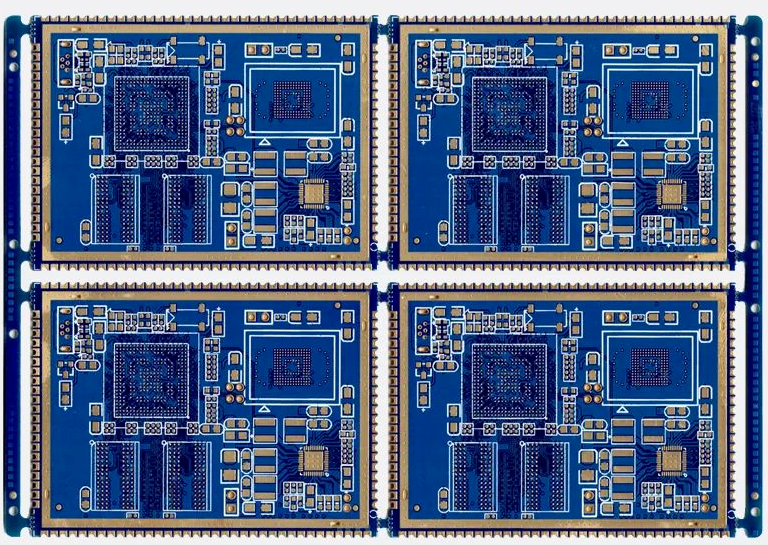Categories
Recent Posts
In the process of making PCB circuit boards, Panelization is a key link, which directly affects the production efficiency and utilisation of circuit boards. Different Panelization methods can to a certain extent optimize the layout of the circuit board, improve the efficiency of material utilization, so as to achieve better production results. Today, we will discuss in detail the specific types of PCB panelization and its characteristics.

1. Spaceless Panelisation
Pitchless Panelization is a type of Panelization that is characterised by the removal of spacing between small cell PCB boards, using V-CUT or stamp hole separation. In this way, there will be no spacing between the small cells of PCBs in the board, which may result in a PCB profile outside the expected range. Panelization without spacing is therefore suitable for PCB designs with less stringent form factor requirements, but it is recommended to avoid this type of panelisation if the form factor is more stringent.
2. Annular PCB panelization
The annular PCB panelization method maximizes single-board utilization rates and minimizes gaps between boards. In this approach, engineering preparation personnel arrange small-unit PCB modules in a predefined pattern to reduce blank areas to the greatest extent possible, thereby optimizing material utilization efficiency. This technique effectively reduces material waste while enhancing production efficiency.
3. Inverted Panel (Reverse-Fold Panelization)
The inverted panel method combines annular panelization with a specialized rotated 180° folding technique, where small-unit PCB modules are arranged in L-shaped or T-shaped interlocking configurations. This approach optimizes template space utilization, enabling tighter layouts and maximizing material efficiency.
4. Macro-Driven Panelization
Macro-driven panelization uses pre-programmed macro instructions. Engineers first import the maximum outline dimensions of individual PCB units into software, then execute panel assembly via click-to-panelize operations. Advantages include:
5. Hybrid Panelization
Hybrid panelization optimizes combinations of aforementioned methods. Engineers select different techniques based on practical requirements to leverage their respective strengths, thereby improving panel utilization and single-board yield. Flexible integration of multiple panelization approaches enables enhanced layout optimization and production outcomes.
Summary of key comparisons
Comparison dimension
Best option
Conditions of application
Material utilisation
Macro-Driven panelization(>95%)
Multiple varieties, small batch
Processing efficiency
Spaceless panelisation
Standardised small PCBs
Thermal requirements
Inverted panel
High Power PCB
Shaped PCBs
Annular PCB panelization
Round/Oval PCB
Complex product line
Hybrid panelization
Multi-layer + shaped combinations
Panelization is an important part of the PCB production process that needs to be seriously considered and solved. Different Panelization methods have different advantages and applicable scenarios, engineers need to choose the appropriate Panelization method according to the actual needs to ensure the production of high-quality PCB boards.
If you have any demands or questions about PCB panelization, please feel free to contact us, we will provide you with one-stop service.
Email : Sales@ucreatepcb.com
Welcome to consult our sales engineer with BOM list and Gerber file